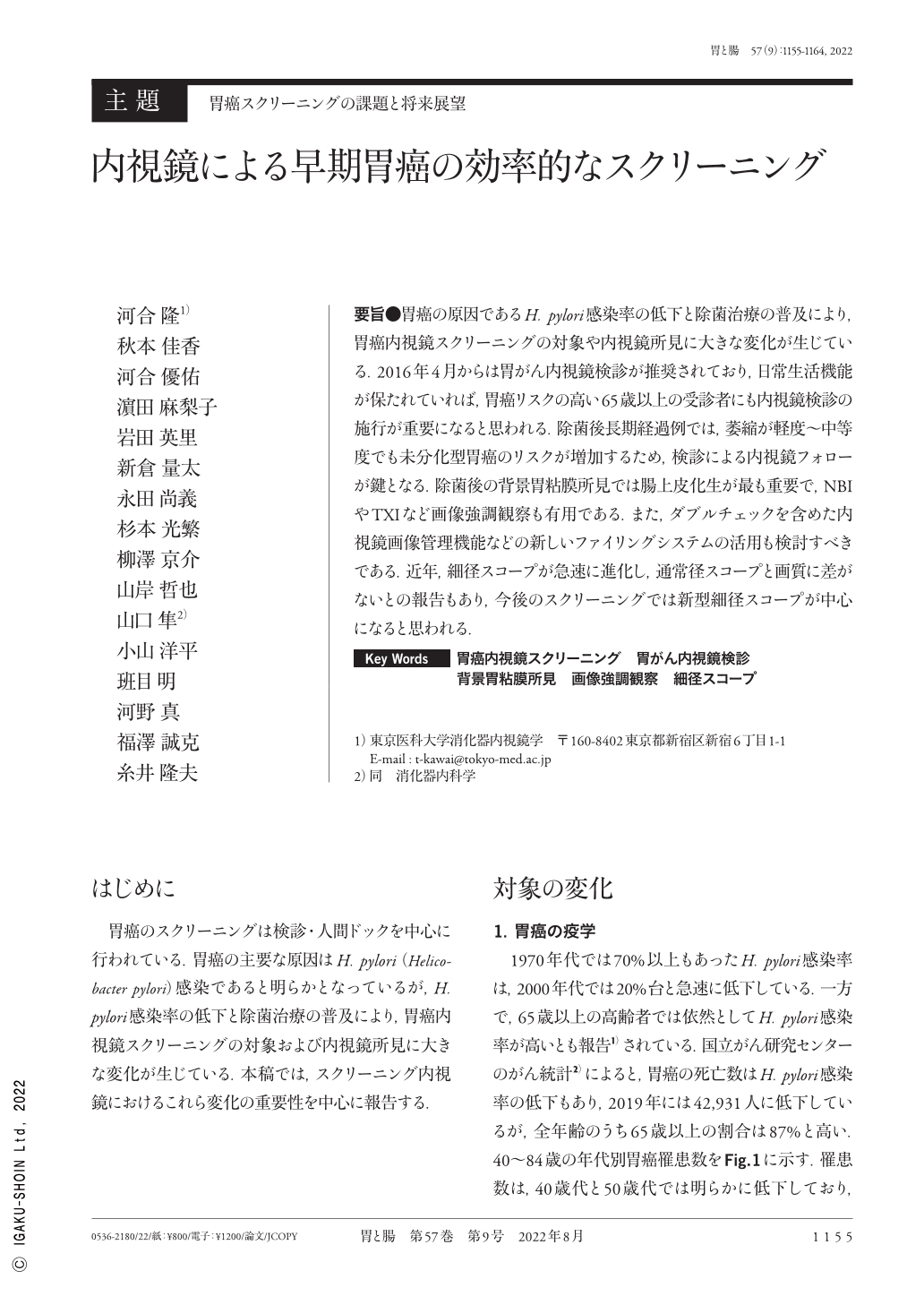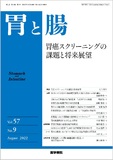Japanese
English
- 有料閲覧
- Abstract 文献概要
- 1ページ目 Look Inside
- 参考文献 Reference
要旨●胃癌の原因であるH. pylori感染率の低下と除菌治療の普及により,胃癌内視鏡スクリーニングの対象や内視鏡所見に大きな変化が生じている.2016年4月からは胃がん内視鏡検診が推奨されており,日常生活機能が保たれていれば,胃癌リスクの高い65歳以上の受診者にも内視鏡検診の施行が重要になると思われる.除菌後長期経過例では,萎縮が軽度〜中等度でも未分化型胃癌のリスクが増加するため,検診による内視鏡フォローが鍵となる.除菌後の背景胃粘膜所見では腸上皮化生が最も重要で,NBIやTXIなど画像強調観察も有用である.また,ダブルチェックを含めた内視鏡画像管理機能などの新しいファイリングシステムの活用も検討すべきである.近年,細径スコープが急速に進化し,通常径スコープと画質に差がないとの報告もあり,今後のスクリーニングでは新型細径スコープが中心になると思われる.
The decline in the rate of H. pylori infection and the spread of eradication of H. pylori have caused changes in the subjects of endoscopic screening and findings for gastric cancer. Endoscopic gastric cancer screening has been recommended since April 2016. If the ADL(activities of daily living)are retained, conducting endoscopic screening seems important even for patients aged 65 and over who are at high risk of gastric cancer. In the case of over 10 years after H. pylori eradication, even if the gastric atrophy is mild-moderate, the risk of diffuse-type gastric cancer increases ; thus endoscopic follow-up by screening is crucial. Intestinal metaplasia is the most important for background gastric mucosal findings after H. pylori eradication, and image-enhancing endoscopies, such as NBI(narrow band imaging)and TXI(texture and color enhancement imaging), are also useful. In recent years, there have also been reports that high-resolution thin scopes have rapidly evolved, and no significant difference has been observed in image quality from conventional scopes. Furthermore, new types of high-resolution thin scopes are believed to be the major tools for gastric cancer screening in the future.

Copyright © 2022, Igaku-Shoin Ltd. All rights reserved.


